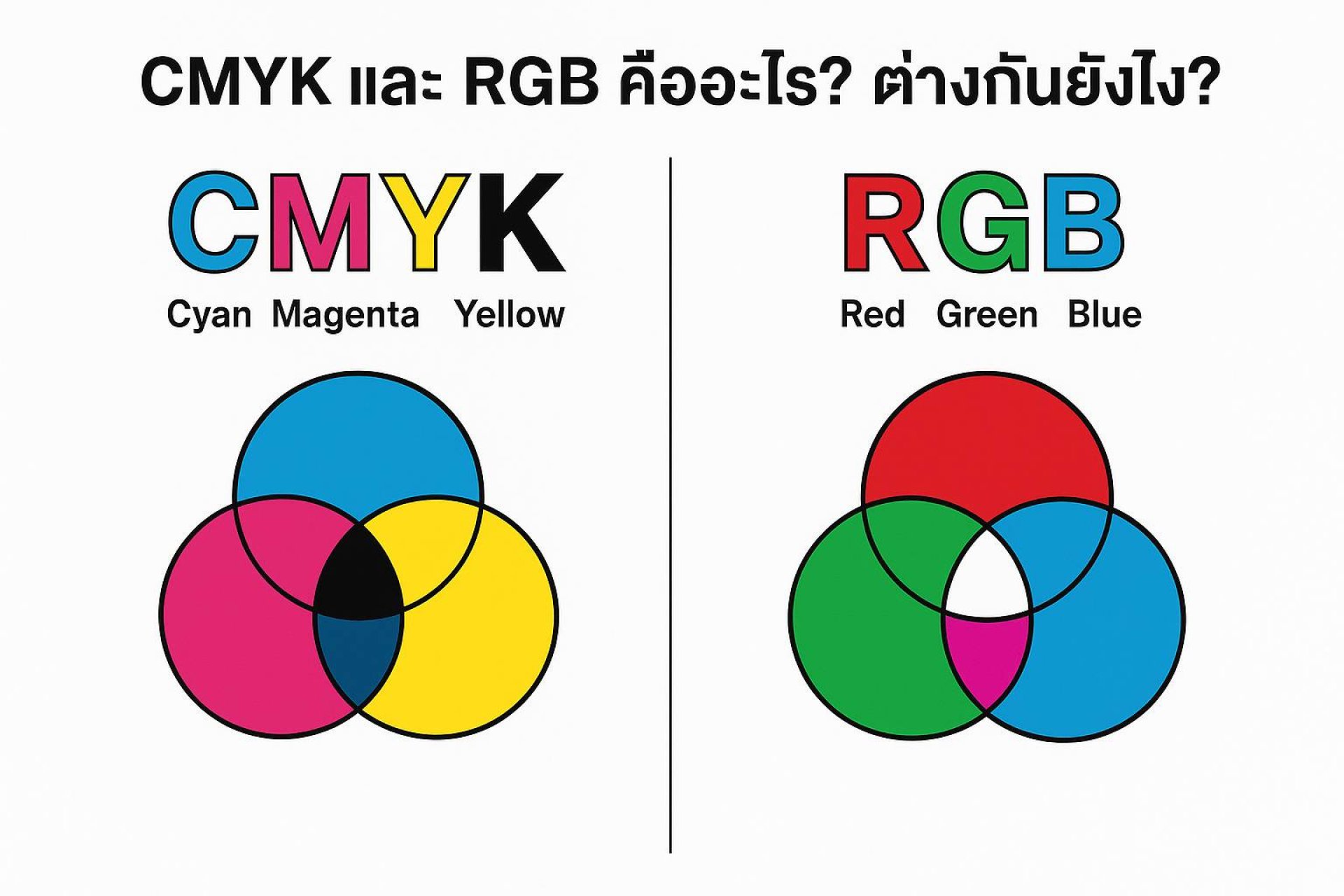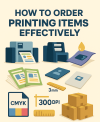CMYK vs RGB: What’s the Difference Between Colors for “Print” and “Screen”? | 133Printing
Last updated: 6 Nov 2025
76 Views

What Are CMYK and RGB, and How Are They Different?
Many people have faced this problem: Why do the colors on screen look different from the printed version?
The main reason lies in the color systems (Color Modes) used for design and printing theyre not the same.
Globally, there are two primary systems: RGB and CMYK.
Lets break down what each one is, how they work, and when to use them.
What Is RGB? Colors for Screens and Digital Devices
RGB stands for Red, Green, Blue.
Its the color system used for light-emitting devices such as computer monitors, phones, TVs, and digital cameras.
RGB works on an Additive Color model it creates color by mixing light.
The more light you add, the brighter the color becomes.
Red + Green + Blue = White
No light = Black
Best for: Websites, social media posts, digital images, videos
Highlights: Bright, vivid, and glowing colors because screens emit light directly.
What Is CMYK? Colors for Real-World Printing
CMYK stands for Cyan, Magenta, Yellow, and Key (Black).
Its the color system used in printers and printed materials such as business cards, brochures, books, packaging boxes, and posters.
CMYK uses a Subtractive Color model it creates color by layering ink.
Each ink color absorbs (or filters) light on paper.
As more inks are layered, the color becomes darker.
In theory, C + M + Y = black, but in practice it turns brownish, so K (Black) is added to produce a deeper black.
Best for: Business cards, posters, menus, flyers, product boxes
Highlights: Accurate and consistent color results for all real-world print production.
Why Do Screen Colors Look Different from Printed Colors?
Because screens use RGB (light), while printers use CMYK (ink).
When colors are converted from light to ink, they may shift or appear duller especially bright tones like neon blues or greens.
How to fix it:
Set your design file to CMYK mode before sending it to print
Use a color-calibrated monitor
Request a color proof from your printer before final production
In Short
RGB = Colors from light for screens
CMYK = Colors from ink for print
133Printings Tip:
To make sure your printed colors match your design as closely as possible:
Convert your file to CMYK before sending it to print
Choose a high-quality printing service
Our team offers free file checks and color advice before printing to ensure perfect results.
At 133Printing, we understand that color is the heart of great printing.
We use high-quality printing systems that support CMYK color accuracy,
and our graphic experts can adjust your files to match the original colors as closely as possible.
For vibrant, accurate, and professional print results just as you see on screen
visit 133Printing.com.
Many people have faced this problem: Why do the colors on screen look different from the printed version?
The main reason lies in the color systems (Color Modes) used for design and printing theyre not the same.
Globally, there are two primary systems: RGB and CMYK.
Lets break down what each one is, how they work, and when to use them.
What Is RGB? Colors for Screens and Digital Devices
RGB stands for Red, Green, Blue.
Its the color system used for light-emitting devices such as computer monitors, phones, TVs, and digital cameras.
RGB works on an Additive Color model it creates color by mixing light.
The more light you add, the brighter the color becomes.
Red + Green + Blue = White
No light = Black
Best for: Websites, social media posts, digital images, videos
Highlights: Bright, vivid, and glowing colors because screens emit light directly.
What Is CMYK? Colors for Real-World Printing
CMYK stands for Cyan, Magenta, Yellow, and Key (Black).
Its the color system used in printers and printed materials such as business cards, brochures, books, packaging boxes, and posters.
CMYK uses a Subtractive Color model it creates color by layering ink.
Each ink color absorbs (or filters) light on paper.
As more inks are layered, the color becomes darker.
In theory, C + M + Y = black, but in practice it turns brownish, so K (Black) is added to produce a deeper black.
Best for: Business cards, posters, menus, flyers, product boxes
Highlights: Accurate and consistent color results for all real-world print production.
Why Do Screen Colors Look Different from Printed Colors?
Because screens use RGB (light), while printers use CMYK (ink).
When colors are converted from light to ink, they may shift or appear duller especially bright tones like neon blues or greens.
How to fix it:
Set your design file to CMYK mode before sending it to print
Use a color-calibrated monitor
Request a color proof from your printer before final production
In Short
RGB = Colors from light for screens
CMYK = Colors from ink for print
133Printings Tip:
To make sure your printed colors match your design as closely as possible:
Convert your file to CMYK before sending it to print
Choose a high-quality printing service
Our team offers free file checks and color advice before printing to ensure perfect results.
At 133Printing, we understand that color is the heart of great printing.
We use high-quality printing systems that support CMYK color accuracy,
and our graphic experts can adjust your files to match the original colors as closely as possible.
For vibrant, accurate, and professional print results just as you see on screen
visit 133Printing.com.
Related Content
Want to save on printing costs without compromising quality?
Discover 5 smart ways to order printing efficiently – from choosing the right printing type and paper to preparing files correctly and ordering in bulk for maximum value.
6 Nov 2025
Printing Reflects Your Brand Identity
From business cards and brochures to packaging boxes — high-quality printing creates the first impression of your brand.
But many people still wonder: “What’s the difference between digital printing and offset printing?”
Today, 133Printing will help you understand both systems clearly, so you can choose the best one for your project and budget.
6 Nov 2025
Did you know? Each sign material delivers very different results!
Let’s explore PVC Foam Board, PP Board, and Foam Board the three most popular materials for signage and decoration.
We’ll walk you through their pros, cons, and best-use applications, so you can choose the right material that fits your budget, purpose, and durability needs perfectly.
6 Nov 2025



